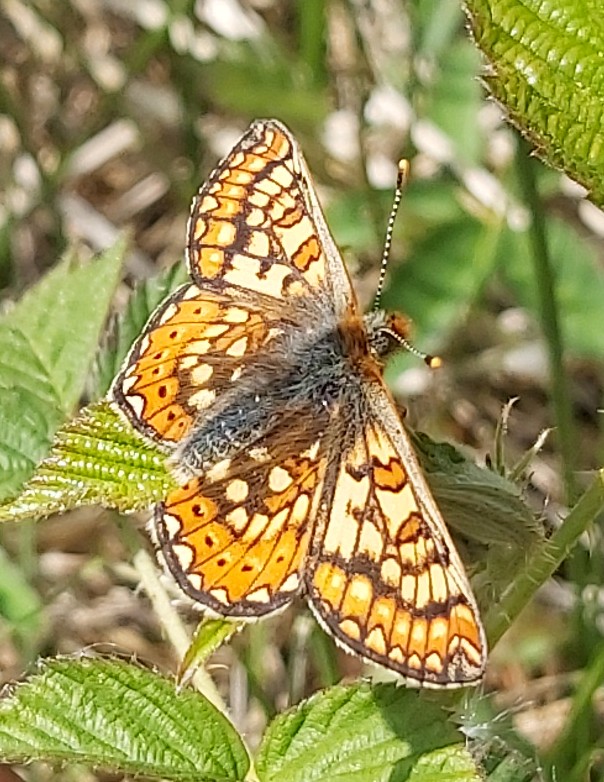New marsh fritillary population discovered in Cwm Gwaun
A new population of marsh fritillaries has been discovered by Pembrokeshire Coast National Park Authority and Butterfly Conservation volunteers in Cwm Gwaun, offering hope for one of Europe’s most vulnerable butterflies, which has disappeared from 43% of its British range since 1985.
The marsh fritillary thrives in rhos pasture where its caterpillars feed on Devil’s-bit scabious, a plant still found across parts of Pembrokeshire’s landscape. The county remains one of the species’ strongholds, despite the sharp decline of populations throughout the rest of Britain.
This summer, volunteers recorded a population in a sheltered, marshy meadow surrounded by ancient woodland. The Park Authority is now working with the farming family who own the land to ensure it remains suitable for traditional cattle grazing, helping maintain species-rich grassland for marsh fritillaries and other wildlife long into the future.
Mary Chadwick, Conservation Officer for the Pembrokeshire Coast National Park Authority, said: “Finding a new marsh fritillary population in Cwm Gwaun is a significant boost for the species locally. It reflects years of careful surveying by volunteers and practical partnership with farmers to keep the right grazing in place. By managing rhos pasture and devil’s-bit scabious, we’re strengthening a cluster of nearby sites so the butterfly can move between them and stay resilient in the long term.”
The site is one of four farms in the locality that together form a marsh fritillary ‘metapopulation’ of close but separate colonies. The Authority has supported grazing at each of them through measures such as scrub clearance, fencing infrastructure and virtual fencing technology, ensuring conditions remain suitable for the butterfly.
This project is funded by the Nature Networks Programme. It is being delivered by the Heritage Fund, on behalf of the Welsh Government.
